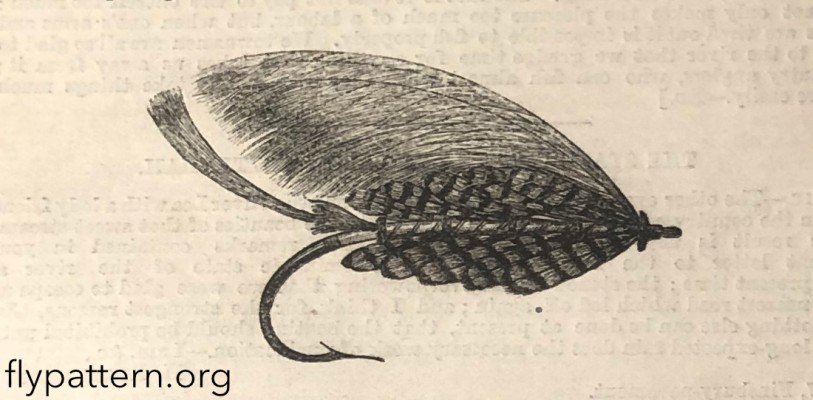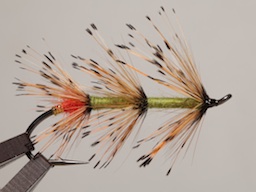From "The fishing gazette" - August 30th, 1884
IT seems so strange that ideas which awaken and urge on the desire of what is erroneous in fishing and in fly-tying find so ready an access to our untutored minds. Is not the young wader roving about up round his waist in bouldery pool certain to pick up objectionable ticks which invariably leave their trace behind? - their indelible evidences to assuredly distract and discourage him in the future. Ask, for example, any angler who involuntarily "drops his fly" (an acquisition easily attained, let me assure you, and although the habit may not be attended with any special danger in certain localities, he would, in others, be breaking every hook) - ask, whether it is not next to an impossibility for him to keep the fly well in the air behind, and whether any attempt to do so is not dreadfully fatiguing. I think we may depend, that, in either pursuit, good habits are inculcated by acts of reason in a continued struggle through many tempting moments. And now that we are drawing near to the more confused and less comprehensible branches of this study where crippled creeds must not go groping about in twilight, I may remind those who have never yet made a tapered body that it is much more difficult to forget and overcome bad habits than to acquire good ones.
It was the hackle question we were on, and if we get wrong with these feathers, it will not be very easy to get right. Ordinary hackles - I mean from poultry - that run up the body of a fly are better fixed in at the beginning of the second turn of the ribs, than at the butt; but in placing them there under a tinselled body, avoid making an unsightly ridge. Form a miniature gutter with the point of the stiletto in the floss silk underneath the tinsel before the varnish on it is dry, and you can stroke and shape the point of the hackle, if you wet it first, to fit in it. The hackle need not be tied there, as the tinsel holds it sufficiently.
When feathers are inserted along the body, such as "Jay" (see illustration), tippets, red crow, &c., this grooving business is very essential on both sides of the hook; then the vice, which is of the greatest service sometimes to those who treat fly dressing as a hobby, is called into requisition. The hook, as usual, being secured at the bend, you take a fine needle at the point in one hand and at the eye in the other, and press it into the undried varnished silk, parallel with the shank.
These patterns, though so much more elaborate than any of the old, ordinary type, are not so expensive as fishermen imagine. One dozen toppings of this size cost about three shillings, and five would probably be ample for this one. The other feathers in it may be bought at a mere lynominal price. There are one or two first-class dressers to be found who would charge no more than £2 per dozen for some of these magnificent specimens.
The "Chatterer" (No. 9) is certainly an exception; but salmon anglers are not always so very particular, if the flies are well made. I should think two-and-sixpence a fair price for "Bluebell" (No. 1). This is less than some metropolitan firms charge for Britannia, The Popham, and other standard patterns.
The time of year for most of these is past - to return in the opening of the season '85, when no doubt my remarks will appear insignificant, and my praises of them inadequate.
When upon the subject of "Jay" as a hackle, I may give an llustration as well as my ideas of its management. The feather is one of the cheapest and yet most useful to us. It is only in the old birds we find the blue bars bright and distinct; the colours in the inferior feathers have the appearance of running one into the other, and are not nearly so attractive.
The above illustration is one of the best I have been able to get, and gives a fair idea of the perfection of the workmanship. I am aware some of the former are below par; but engravers are not very familiar with the shape and perspective of salmon flies; and as these were in the Exhibition for six months, and have been conveyed several hundred miles, the feathers are consequently slightly shaken and out of place. This one may be described as follows: -
Tag: Silver twist and canary-coloured floss.
Tail: Topping and red crow.
Butt: Black herl.
Body: In four sections, butted. No. 1: Topping-coloured silk, with four Jay points (as illustrated) - two above and below. 2: Tippet-coloured silk, and repeat the Jay's. 3: Red-crow coloured silk and Jays. 4: Red claret silk and Jays, as before.
Ribbed: Fine oval tinsel.
Wings: Toppings.
Horns: Red macaw.
Head: Black herl.
|

